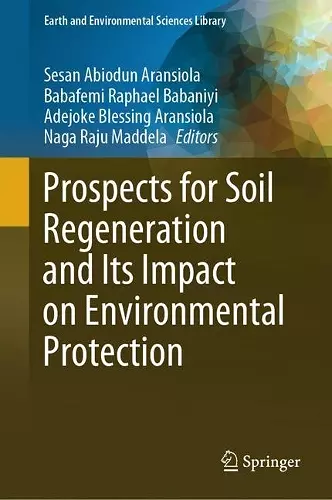Prospects for Soil Regeneration and Its Impact on Environmental Protection
Naga Raju Maddela editor Sesan Abiodun Aransiola editor Babafemi Raphael Babaniyi editor Adejoke Blessing Aransiola editor
Format:Hardback
Publisher:Springer International Publishing AG
Published:27th Feb '24
Should be back in stock very soon

Soil is a complex system of inorganic and organic materials, living organisms, water, and air. It is home to more than one trillion species of microorganisms. Soil also plays an important role in the global carbon cycle. Because plants absorb carbon from the atmosphere, convert it to plant tissue, and return it to the soil as plant residue, soils globally act as the world’s largest sink of active carbon. Soil has role to play in food production and safety. Soil contamination undermined by modern agricultural practices that deplete soil carbon stocks. Anthropogenic greenhouse gas emissions have been raising recorded temperatures since the Industrial Revolution. Greenhouse gas emissions from agriculture, forestry, and fisheries have almost doubled in the last 50 years and will increase by 30% by 2050 given the current trend. The primacy of arresting climate change is nowhere more evident than the adoption of 195 countries of the first legally binding global climate deal at the Paris Climate Conference in 2015. With atmospheric carbon dioxide (CO2) reaching 400 parts per million in 2016, soils can be an ally in bringing the CO
ISBN: 9783031532696
Dimensions: unknown
Weight: unknown
389 pages
2024 ed.